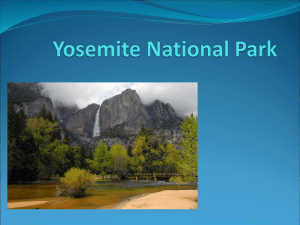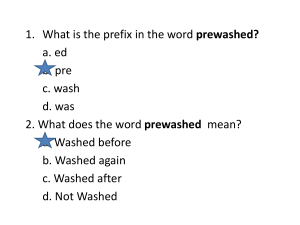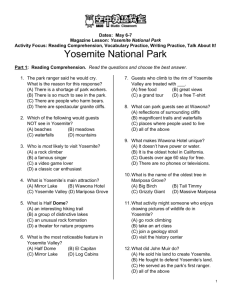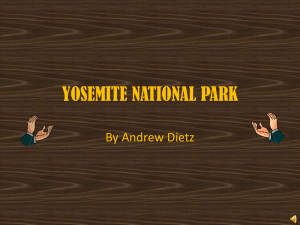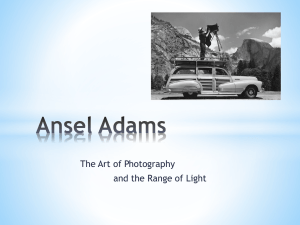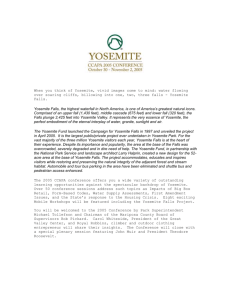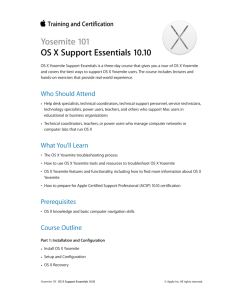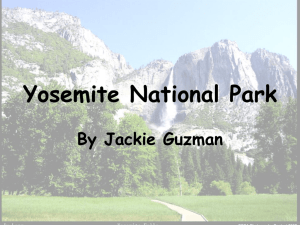TIMeLINe - The Getty
advertisement
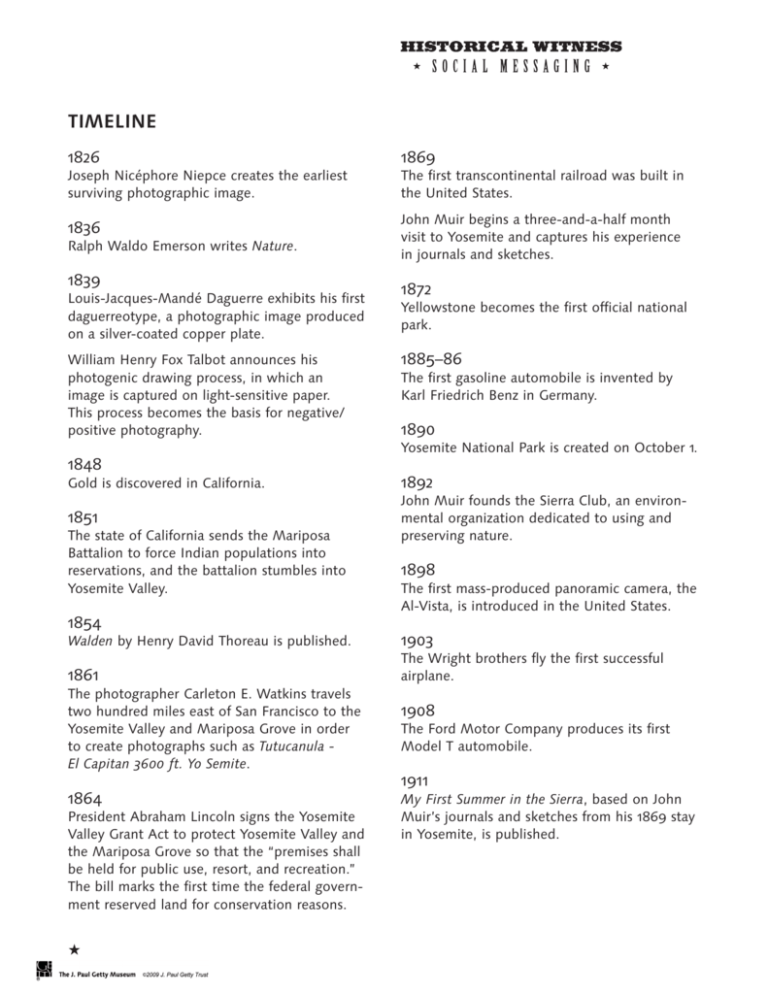
Timeline 1826 1869 Joseph Nicéphore Niepce creates the earliest surviving photographic image. The first transcontinental railroad was built in the United States. 1836 John Muir begins a three-and-a-half month visit to Yosemite and captures his experience in journals and sketches. Ralph Waldo Emerson writes Nature. 1839 Louis-Jacques-Mandé Daguerre exhibits his first daguerreotype, a photographic image produced on a silver-coated copper plate. William Henry Fox Talbot announces his photogenic drawing process, in which an image is captured on light-sensitive paper. This process becomes the basis for negative/ positive photography. 1848 1872 Yellowstone becomes the first official national park. 1885–86 The first gasoline automobile is invented by Karl Friedrich Benz in Germany. 1890 Yosemite National Park is created on October 1. Gold is discovered in California. 1892 1851 John Muir founds the Sierra Club, an environmental organization dedicated to using and preserving nature. The state of California sends the Mariposa Battalion to force Indian populations into reservations, and the battalion stumbles into Yosemite Valley. 1854 1898 The first mass-produced panoramic camera, the Al-Vista, is introduced in the United States. Walden by Henry David Thoreau is published. 1903 1861 The Wright brothers fly the first successful airplane. The photographer Carleton E. Watkins travels two hundred miles east of San Francisco to the Yosemite Valley and Mariposa Grove in order to create photographs such as Tutucanula El Capitan 3600 ft. Yo Semite. 1864 President Abraham Lincoln signs the Yosemite Valley Grant Act to protect Yosemite Valley and the Mariposa Grove so that the “premises shall be held for public use, resort, and recreation.” The bill marks the first time the federal government reserved land for conservation reasons. 1908 The Ford Motor Company produces its first Model T automobile. 1911 My First Summer in the Sierra, based on John Muir’s journals and sketches from his 1869 stay in Yosemite, is published. 1913 1944 The Ford Motor Company streamlines its assembly-line process so that the Model T can be assembled in ninety-three minutes. By 1927, more than fifteen million Model Ts are sold. The G.I. Bill offers low-interest thirty-year loans to potential homeowners who have returned from World War II. 1913–14 Japan surrenders, and World War II ends. The first 35 mm still camera is developed. 1930s Severe droughts in the American Midwest and Great Plains give rise to the Dust Bowl. 1932 Route 66 connects hundreds of towns between Chicago and Los Angeles. Franklin Delano Roosevelt is elected as the thirty-second president of the United States on his “New Deal” platform. Mid-1930s Thousands of Great Plains farmers, known as “Okies,” move to California to find work. 1935 Roosevelt establishes the Works Progress Administration to lessen the effects of the Great Depression. 1937 The United States Housing Act is passed, renewing federal commitment to offer affordable housing to America’s urban poor and creating public housing programs. 1945 1947 William Levitt begins construction of seventeen thousand houses in Long Island, New York, using assembly-line techniques to mass-produce the houses. 1950 Lakewood, one of the first large-scale postwar housing developments, is built in a Los Angeles County suburb. William A. Garnett shoots photographs of Lakewood, including Trenching Lakewood, California, while flying a plane. 1954 Visitors to Yosemite exceed one million per year for the first time. 1956 The Federal-Aid Highway Act authorizes the building of over forty thousand miles of U.S. highways. 1959 California establishes the Motor Vehicle Pollution Control Board to regulate motor vehicle emissions. Mid-1990s 1941 Japan bombs Pearl Harbor, and the U.S. enters World War II, putting an end to the Great Depression. Visitors to Yosemite exceed four million per year. 2007 The American Lung Association releases a report ranking Los Angeles as the most polluted U.S. city. Land use and Lawmaking in California

